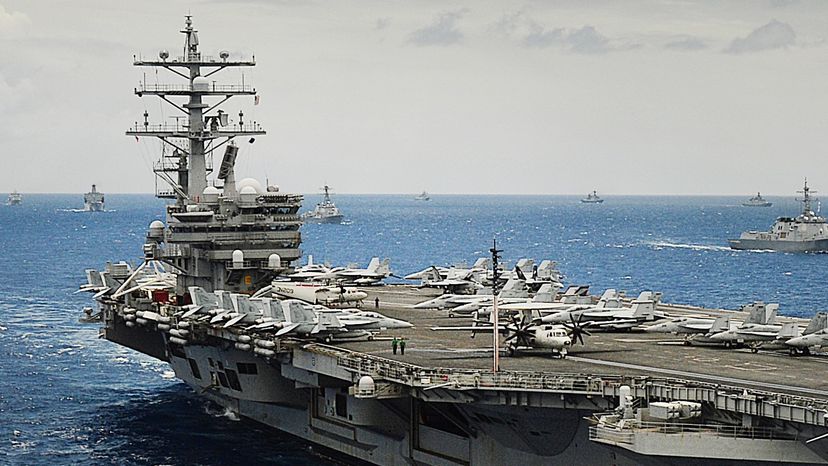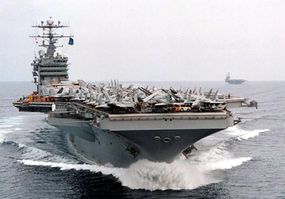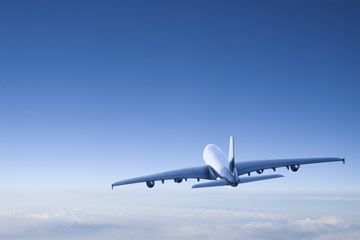
When the U.S. Navy really needs to impress people, it flies them out to one of its super aircraft carriers. Standing 20 stories above the water and stretching 1,092 feet (333 meters) from bow to stern (about as long as the 77-story Chrysler Building is tall), the sheer bulk of these ships is awe-inspiring. But the really amazing thing about a supercarrier isn't its size; it's the intense scene on its flight deck. When the crew is in full swing, it can launch or land a plane every 25 seconds -- all in a fraction of the space available on a typical landing strip.
In this article, we'll find out what the U.S. Navy's modern Nimitz-class aircraft carriers are all about. We'll learn what's on the different decks, take a look at the amazing machines that help launch and land aircraft, and find out a little about daily life on these enormous floating bases. As we'll see, the modern aircraft carrier is one of the most amazing vehicles ever created.
Advertisement
At its most basic level, an aircraft carrier is simply a ship outfitted with a flight deck -- a runway area for launching and landing airplanes. This concept dates back almost as far as airplanes themselves. Within 10 years of the Wright Brothers' historic 1903 flight, the United States, the United Kingdom and Germany were launching test flights from platforms attached to cruisers. The experiments proved largely successful, and the various naval forces started adapting existing warships for this purpose. The new carriers allowed military forces to transport short-range aircraft all over the world.

Carriers didn't play a huge role in World War I, but they were central to the air combat of World War II. For example, the Japanese launched the 1941 attack on Pearl Harbor from aircraft carriers. Today, super aircraft carriers are a crucial part of almost all major U.S. military operations. While the ship itself isn't especially useful as a weapon, the air power it transports can make the difference between victory and defeat.
One of the major obstacles of using air power in war is getting the planes to their destination. To maintain an air base in a foreign region, the United States (or any other nation) has to make special arrangements with a host country, and then has to abide by that country's rules, which may change over time. Needless to say, this can be extremely difficult in some parts of the world.
Under international Freedom of Navigation laws, aircraft carriers and other warships are recognized as sovereign territories in almost all of the ocean. As long as a ship doesn't get too close to any nation's coast, the crew can carry on just like they're back home. So, while the U.S. military would have to make special arrangements with a foreign nation to set up a land military base, it can freely move a carrier battle group (an assembly of an aircraft carrier and six to eight other warships) all over the globe, just as if it were a little piece of the United States. Bombers, fighters and other aircraft can fly a variety of missions into enemy territory, and then return to the relatively safe home base of the carrier group. In most cases, the Navy can continually replenish (resupply) the carrier group, allowing it to maintain its position indefinitely.
Carriers can move in excess of 35 knots (40 mph, 64 kph), which gives them the ability to get anywhere in the ocean in a few weeks. The United States currently has six carrier groups stationed around the world, ready to move into action at a moment's notice.

